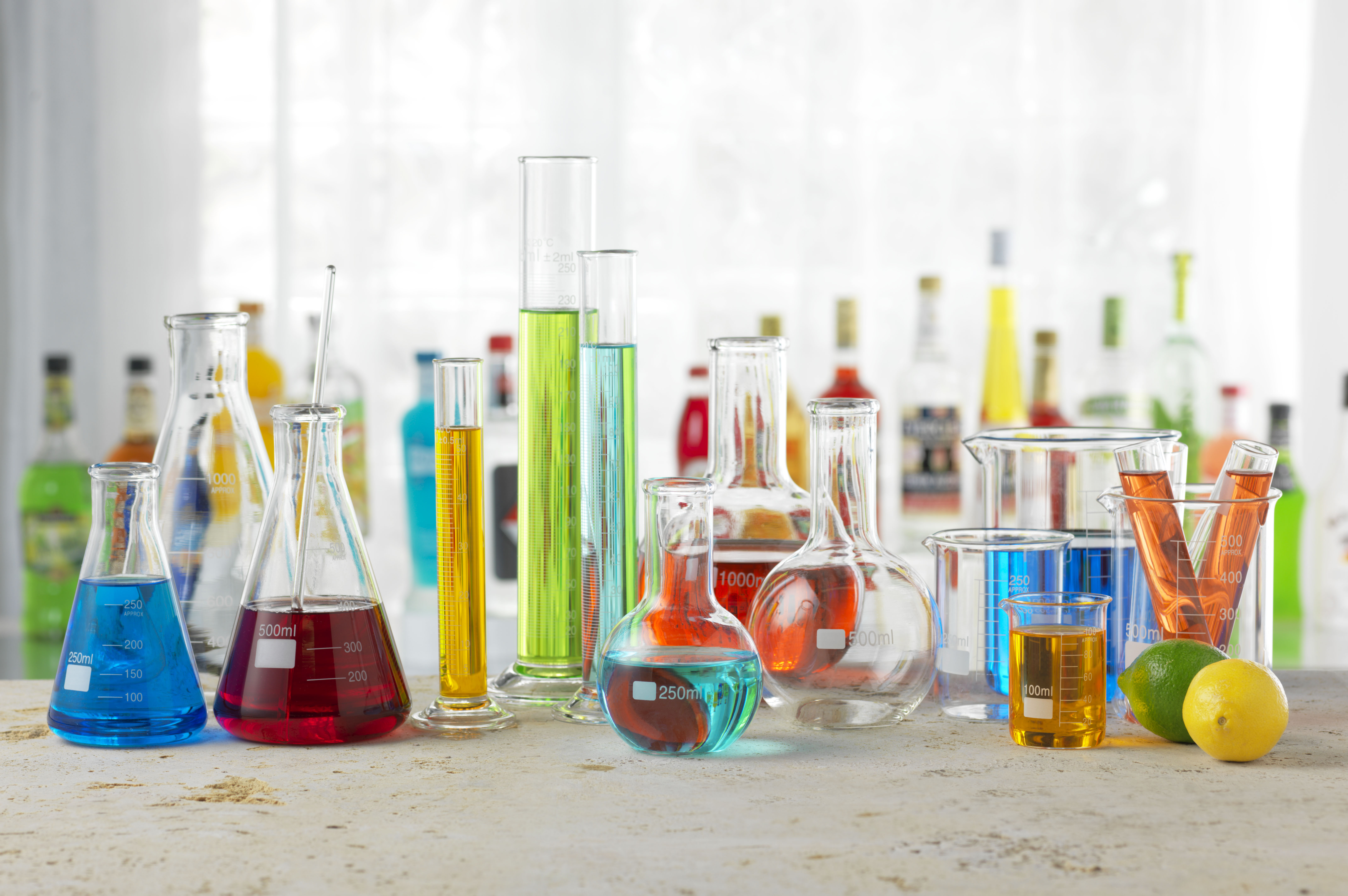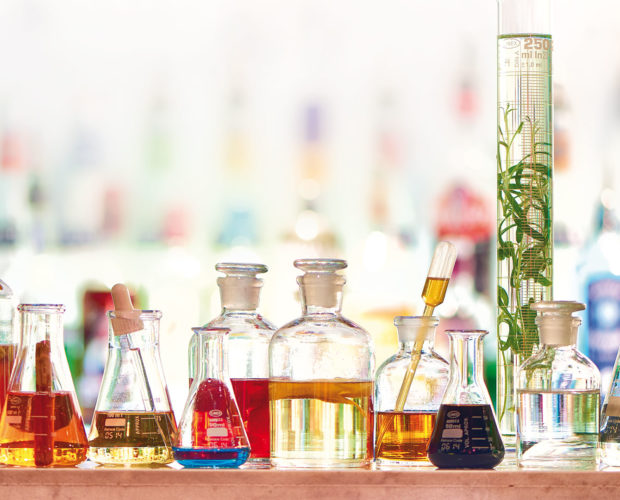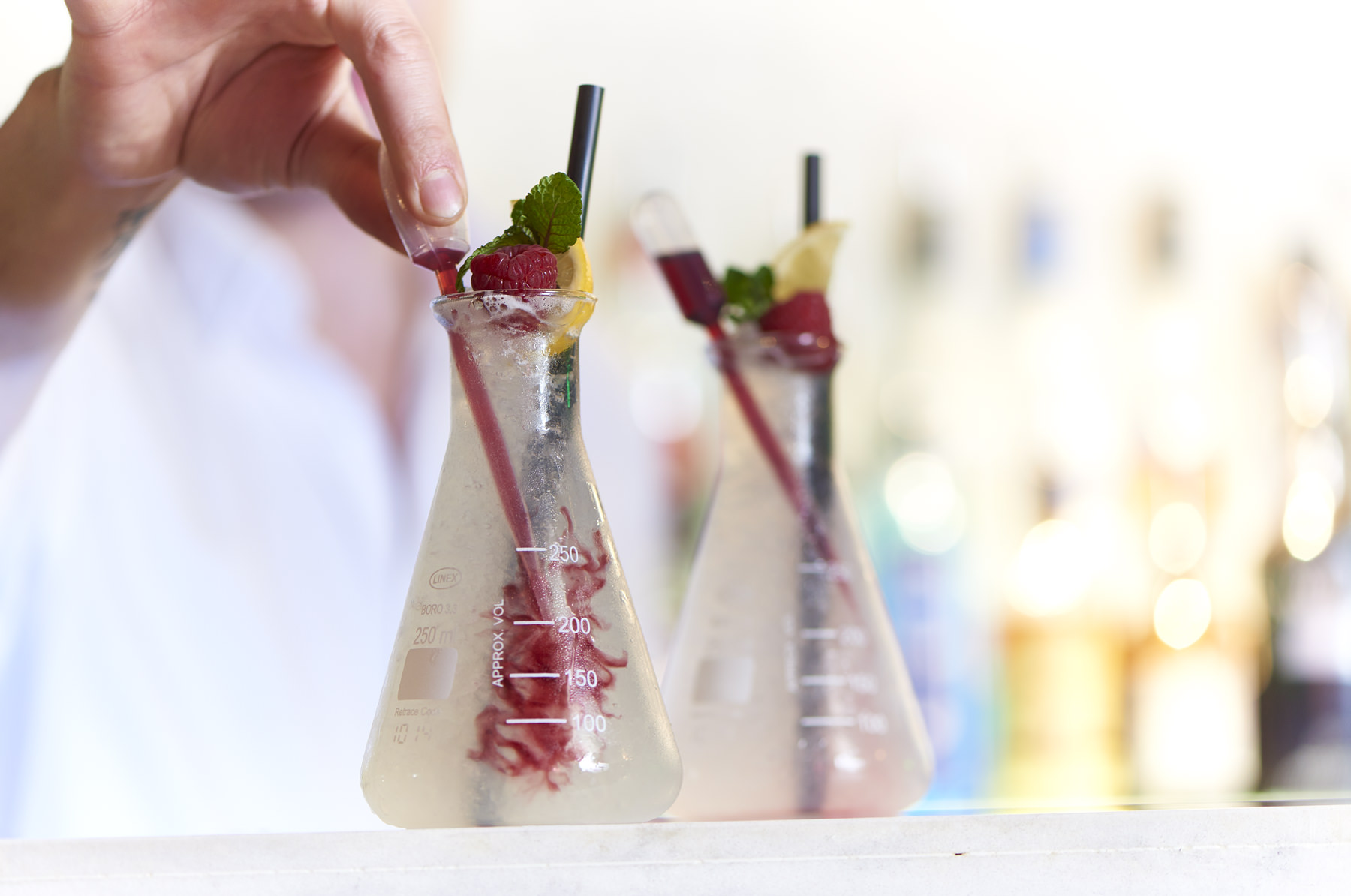Sugar has always been an element of cocktail culture. Part of the earliest definitions of the cocktail , it adds essential depth of flavor, texture and balance to drinks. And this is not just speculation: sweetness is one of the five basic tastes. Moreover, a person’s pleasure from sweets is determined genetically. Before the advent of chemicals and artificial additives, sweetness was an indicator of calorie-rich food needed for survival. Well, behind the bar it’s all about taste.
Measure sugar content
Measuring sugar content can be deceiving. Fortunately, the relevant characteristics were discussed in a tablet in Dave Arnold's work “Liquid Intelligence” . The governments of Finland and Sweden have also created searchable lists of some alcoholic beverages with sugar content.
Sugar concentration is measured in points from 0 to 100 on the Brix scale . So, the ratio of water and sugar in syrup is 1 to 1 - this is 50 points on the Brix scale; 1 to 2 – 66 points. However, it is very easy to make mistakes in measurements, so many bars choose a subjective assessment method - tasting. Also, syrup manufacturers, such as MONIN, indicate the Brix indicator directly on the bottle, which makes it much easier to control the taste. However, the key in any case is to define a clear standard so that the taste of the cocktails does not vary.

Achieve the right result
If the syrup is bad, then the recipe becomes bad, right? And regularly changing the proportions affects the taste of the cocktail - it turns out different every time. In order for the taste to be constant, you need a standard, otherwise you will have to constantly try and bring the taste to balance. It is especially difficult to maintain balance when mixing different types of sugar. For example, liqueur and sweet vermouth in Manhattan provide a sweetness that is very difficult to balance.

Maintain balance
If the drink isn't sweet enough, it's simple - just add a little more syrup. But if the drink is too sweet, it is not always possible to intuitively understand what needs to be done. There are two surefire ways: add bitter or add sour. Bitterness reduces the perception of sweetness. One of the best examples here is perhaps Campari - although it contains a lot of sugar, it is known for its bitter taste, not for its sweet one. Another interesting method is “washing out” with fats or milk: adding milk to an overly sweet drink, you seem to remove its sweetness.
Achieve the right result If the syrup is bad, then the recipe becomes bad, right? And regularly changing the proportions affects the taste of the cocktail - it turns out different every time. In order for the taste to be constant, you need a standard, otherwise you will have to constantly try and bring the taste to balance. It is especially difficult to maintain balance when mixing different types of sugar. For example, liqueur and sweet vermouth in Manhattan provide a sweetness that is very difficult to balance.

But if you change the temperature of the drink, for example making a cocktail at room temperature instead of cold or a cold version of a hot one, you will have to re-balance its taste. The hotter the drink, the sweeter it is.
It is especially important to consider the above when preparing cocktails with a sweet base, such as liqueur: even without adding additional sugars, you risk making the drink too sweet.
As they say, success is sweet, but balanced cocktails usually are not.
Glass in the photo: Libbey LAB series.
The original article in English can be viewed here .
















































/https%3A%2F%2Fcomplexbar.com%2Fimages%2Fblog%2F58%2Fdanilyuk.jpeg)
/https%3A%2F%2Fcomplexbar.com%2Fimages%2Fblog%2F246%2Fsirop_scale_2400.jpeg)
/https%3A%2F%2Fcomplexbar.com%2Fimages%2Fblog%2F246%2Fkofe-vostochniy.jpg)
/https%3A%2F%2Fcomplexbar.com%2Fimages%2Fblog%2F245%2Fpexels-jason-villanueva-851555.jpg)
/https%3A%2F%2Fcomplexbar.com%2Fimages%2Fblog%2F246%2F2024-04-09_17.22.54.jpg)
/https%3A%2F%2Fcomplexbar.com%2Fimages%2Fblog%2F246%2F2024-04-09_17.22.47.jpg)
/https%3A%2F%2Fcomplexbar.com%2Fimages%2Fblog%2F246%2FCODE_anons_foamydrops_752%D1%85480_eng.jpg)
/https%3A%2F%2Fcomplexbar.com%2Fimages%2Fblog%2F246%2FAlina_752%D1%85480_eng.jpg)
/https%3A%2F%2Fcomplexbar.com%2Fimages%2Fblog%2F246%2F2024-04-09_17.23.22.jpg)
/https%3A%2F%2Fcomplexbar.com%2Fimages%2Fblog%2F246%2F2024-04-09_17.23.28.jpg)
/https%3A%2F%2Fcomplexbar.com%2Fimages%2Fblog%2F246%2F2024-04-09_17.23.35.jpg)
/https%3A%2F%2Fcomplexbar.com%2Fimages%2Fblog%2F246%2Fdrinksome_752%D1%85480_eng.jpg)
/https%3A%2F%2Fcomplexbar.com%2Fimages%2Fblog%2F246%2Fnude_752%D1%85480_eng.jpg)
/https%3A%2F%2Fcomplexbar.com%2Fimages%2Fblog%2F246%2F752%D1%85480_eng__1_.jpg)
/https%3A%2F%2Fcomplexbar.com%2Fimages%2Fblog%2F246%2F752%D1%85480_eng.jpg)
/https%3A%2F%2Fcomplexbar.com%2Fimages%2Fblog%2F246%2FStudioRaw_752%D1%85480_eng.jpg)
/https%3A%2F%2Fcomplexbar.com%2Fimages%2Fblog%2F246%2FDoppio_tea_752%D1%85480_eng.jpg)
/https%3A%2F%2Fcomplexbar.com%2Fimages%2Fblog%2F246%2FTognana_Stars_Stripes_752%D1%85480_eng.jpg)
/https%3A%2F%2Fcomplexbar.com%2Fimages%2Fblog%2F246%2FRona_752%D1%85480_eng.jpg)
/https%3A%2F%2Fcomplexbar.com%2Fimages%2Fblog%2F246%2FDoppio_vending_752%D1%85480_eng.jpg)
/https%3A%2F%2Fcomplexbar.com%2Fimages%2Fblog%2F246%2FEssence_sukhie_smesi_752%D1%85480_eng.jpg)
/https%3A%2F%2Fcomplexbar.com%2Fimages%2Fblog%2F246%2FODK_sukhie_smesi752%D1%85480_eng.jpg)
/https%3A%2F%2Fcomplexbar.com%2Fimages%2Fblog%2F246%2Funiforma-barmena.jpg)
/https%3A%2F%2Fcomplexbar.com%2Fimages%2Fblog%2F246%2Fkak-nanyat-barmena.jpg)
/https%3A%2F%2Fcomplexbar.com%2Fimages%2Fblog%2F246%2Fsirop_scale_2400.jpeg)
/https%3A%2F%2Fcomplexbar.com%2Fimages%2Fblog%2F246%2FPeugeot_Anons_Paris_U%27Select_Line_Daman_752%D1%85480_eng.jpg)
/https%3A%2F%2Fcomplexbar.com%2Fimages%2Fblog%2F246%2Fkofe-vostochniy.jpg)
/https%3A%2F%2Fcomplexbar.com%2Fimages%2Fblog%2F246%2FMadler.jpg)
/https%3A%2F%2Fcomplexbar.com%2Fimages%2Fblog%2F246%2Fprofbartender_glavn.jpeg)